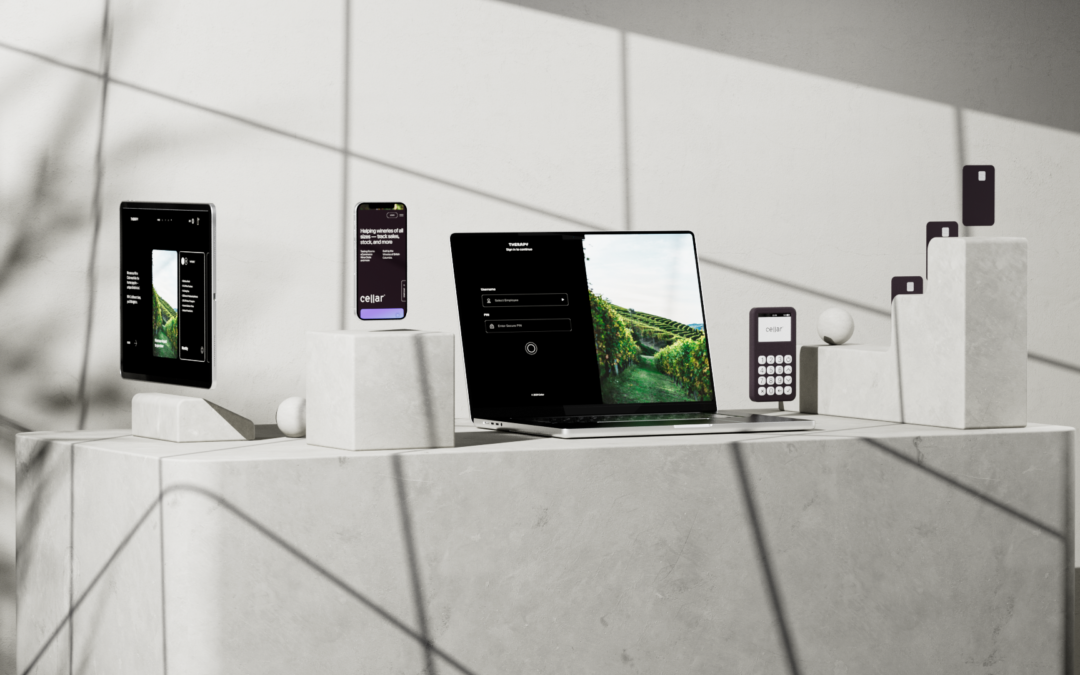Cellar Technologies (aka “Cellar”) has launched its first public beta to customers in the Okanagan after nearly 10 months in stealth mode.
What is Cellar?
Cellar is a reaction to a market incumbent that is no longer innovating at scale. Distracted by fulfillment, corporate customers are left wanting more. Cellar has launched in Beta to customers in the Okanagan, and is starting to scale across North America.
We’ve outlined below some of our operating insights and our general industry worldview. This is our mission.
Insight: The incumbent is no longer innovating at scale.
Our operating hypothesis is that SaaS players in the space have stopped innovating meaningfully. Typically more focussed on building a competitive moat by locking vineyards into long term deals and (perceived) high switching costs, driving end customer value has fallen down the priority list. Through our extensive network in the BC Interior, we seek to unseat industry leadership for vineyards looking to build a DTC sales channel in the 21st century.
Insight: Leveraging a platform, but rolling your own site.
After hundreds of interviews with Wineries around the world, we’ve found a trend emerging among vineyards that work with the current industry leader. Some vineyards are taking the step of building their own custom website that simply redirects to a “shop” page hosted on the platform. One example would be Flâneur Wines, which has both a (beautiful) WordPress website and an eCommerce shop. Speaking with Marty Doerschlag from Flâneur, they had to innovate themselves based on necessity as the templates were “limited and hard to use, but it runs our whole business.” They limited the impact by making the two sites work together as cleanly as possible, with redirects to push visitors back and forth as needed. Not ideal or very user-friendly.
Insight: The DTC wine business is booming. (Duh!)
Based on reporting from Rabobank, Wines & Vines’ Analytics Report and WineDirect’s Annual DTC Wine Sales Report, we know that the total value of wine shipped Direct-to-Consumer was $3.2 billion USD in 2019. Additionally, WineDirect reports that eCommerce accounts for only 47% of total DTC wine sales for US-based vineyards. That puts the 2019 Total Addressable Market (TAM) between $5.5 billion to $6.2 billion in 2019 — which means the DTC wine market is about twice as large as expected. The discrepancy is based on the volume of sales done in Tasting Rooms across the nation, which also flow through the POS platform and are therefore tracked. Typically, this information is not publicly available to third-party sources like industry analysts.
Insight: K.I.S.S.
Without deep industry experience and knowledge, it is hard for new startups to crack this market. Those that do tend to take a ‘boil the ocean’ approach, offering services that cover every aspect of a vineyard’s operations: sales, marketing, production, inventory control, distribution, fulfillment, and accounting. It’s one of the only B2B SaaS markets that operates this way, and leads to a platform that is so massive and unwieldy that it is hard to maintain for such a small customer base. The current industry leader suffers from this now, which will make it easy to catch them.
Our approach will be to focus first on the highest value aspects of a vineyard’s operations. Tasting Room CX, Member Management and Product Control will be our first priorities above all else.
Insight: Capturing memberships more effectively could be the difference.
Vineyards have long struggled with building long-term customer relationships. The dynamics of a wine tour are such that you are seeing multiple vineyards in a single day or single week, and the opportunity to capture that customer is relatively short. In the moment, consumers are more likely to buy a bi-annual or quarterly wine club subscription and the application process must be dead simple. The impact could be a 8–10x increase in the LTV for that customer (from $25 (the average tasting room cost) to over $200).
In 2020, in the midst of a global pandemic, when tourism dollars have disappeared…every dollar counts for SMB vineyards. The impact of this alone cannot be overstated.
Insight: Tracking costs will give proprietors an edge in the market.
Vineyards all make wine in essentially the same way, and have for years. The natural complexities of the manufacturing process, however, make it difficult for SMBs to accurately track ground truth costs for their production of different varietals. A simple way to win the market would be to for the first time unearth the true profitability of each bottle. Unit economics will be a revelation for the industry, long besieged by a lack of cost transparency.
Insight: More than sales — the life cycle of a vintage.
If we’re able to sell wine DTC more effectively, we can win the market. But, if we’re able to more accurately predict and react to the natural life cycle of a specific vintage we can potentially deliver a game-changer to the market. WineDirect, and others, by default simply let the inventory expire without notifying customers who have included that bottle in their club memberships or ECOM orders. By doing the opposite of that, we can create opportunities to delight customers instead.
In conclusion
Our mission states that: “We are the only SaaS liquor technology, that makes modern digital products, for makers and their teams, who want to seed new growth, in an era of uncertainty.” With our first customers now public and revenue-generating, we look forward to expanding rapidly across North America.
We’ll see you on the battlefield.

